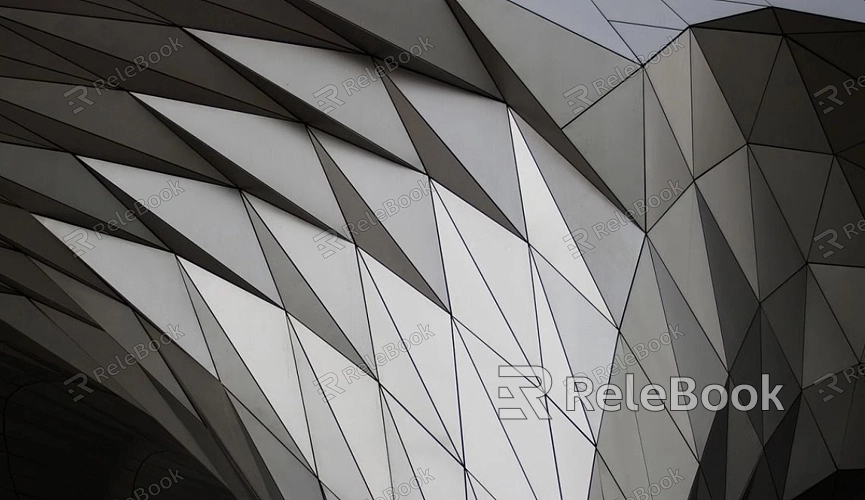How to Make Low Poly 3D Models?

Understanding Low Poly Modeling
Low poly modeling involves creating 3D models with a minimal number of polygons. The term "polygon" refers to the flat shapes (usually triangles or quadrilaterals) that are used to build the surface of a 3D model. By reducing the number of polygons, you decrease the complexity of the model, which can significantly improve performance, especially in real-time applications like games. Low poly models are characterized by their blocky and angular appearance, which can be both stylistically appealing and functional.
Choosing the Right Software
To start creating low poly 3D models, you need to select appropriate software tools. Several popular programs can help you achieve your goal:
1. Blender: A powerful, open-source 3D modeling software that is widely used for creating low poly models. It offers a comprehensive set of tools for modeling, texturing, and rendering.
2. Maya: A professional 3D modeling tool from Autodesk, known for its robust modeling features and flexibility.
3. 3ds Max: Another Autodesk product, 3ds Max is well-suited for low poly modeling, especially in game development.
4. Cinema 4D: This software provides a user-friendly interface and advanced tools for creating low poly models.
Each of these tools has its unique strengths, so the choice depends on your specific needs and preferences.
Setting Up Your Workspace
Once you’ve chosen your software, the next step is to set up your workspace for efficient low-poly modeling. Here are some tips:
1. Create a New Project: Start by setting up a new project and configuring your scene. This ensures you have a clean slate and the correct settings for your model.
2. Reference Images: Import reference images or blueprints to guide your modeling process. These can be front, side, and top views of the object you plan to model.
3. Organize Your Scene: Arrange your workspace, including the viewports and tool panels, to fit your modeling style. Keeping your workspace organized helps streamline the modeling process.

Basic Modeling Techniques
The core of low poly modeling involves manipulating basic shapes to form your desired model. Here’s a breakdown of essential techniques:
1. Start with Basic Shapes: Begin with simple geometric shapes like cubes, spheres, or cylinders. These shapes can be modified and combined to build more complex models.
2. Extrude and Scale: Use extrusion and scaling tools to extend and shape your basic forms. Extruding adds new geometry while scaling adjusts the size of existing elements.
3. Edge Loop and Knife Tools: These tools allow you to add and manipulate edge loops, which are useful for adding detail and refining the shape of your model.
Maintaining a Low Polygon Count
One of the key aspects of low poly modeling is keeping the polygon count low while maintaining the desired visual quality. Here’s how you can achieve that:
1. Optimize Geometry: Regularly check and remove unnecessary vertices and edges. This helps in reducing the overall polygon count.
2. Use Normal Maps: Instead of adding more polygons to create details, use normal maps to simulate surface detail and texture. This technique helps in maintaining a low polygon count while achieving a more detailed appearance.
3. Simplify Shapes: Focus on creating simplified shapes that convey the essential features of your model without excessive detail.
Texturing and Materials
Texturing and materials play a significant role in enhancing the appearance of low poly models. Here’s how to approach texturing:
1. UV Mapping: Unwrap your model’s UVs to create a 2D representation of its surface. This process allows you to apply textures accurately.
2. Texture Painting: Use texture painting tools to create and apply textures. Keep textures simple and stylized to complement the low poly look.
3. Material Settings: Adjust material properties such as color, shininess, and transparency to achieve the desired visual effect. In low poly models, materials often play a crucial role in defining the model’s look.
Rigging and Animation (Optional)
If you plan to animate your low poly model, rigging and animation will be necessary steps:
1. Rigging: Create a skeleton or rig for your model. This involves adding bones and setting up controls to allow for movement and deformation.
2. Animation: Use keyframes to animate your model. Low poly models can be animated to perform various actions, enhancing their usability in games and animations.
FAQ
What is the advantage of using low poly models?
Low poly models are less resource-intensive, making them ideal for real-time applications like video games. They improve rendering performance and can be styled to create a unique visual aesthetic.
Can I use low poly models for high-resolution rendering?
Low poly models are typically used for real-time applications. For high-resolution rendering, you may need to use high poly models with more detailed textures.
Do I need to be an expert to create low poly models?
No, low poly modeling is accessible to beginners and can be learned with practice. Many tutorials and resources are available to help you get started.
How can I ensure my low poly models are optimized?
Regularly check for and remove unnecessary polygons, use normal maps for details, and simplify shapes to maintain a low polygon count while achieving the desired visual quality.
What software is best for low poly modeling?
Popular choices include Blender, Maya, 3ds Max, and Cinema 4D. Each has its strengths, so choose one based on your specific needs and preferences.

